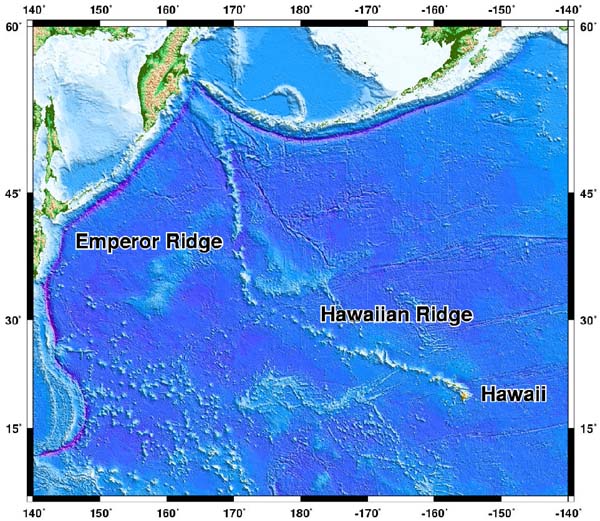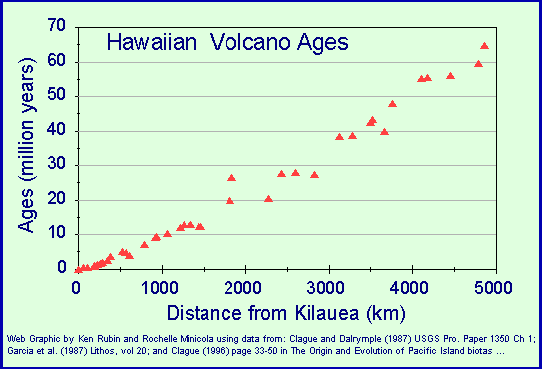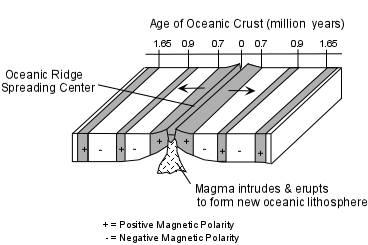But an ark has been found on Mars!
Well someone beat me to it. But there’s a really short argument here. Any movie using such arguments is not worth watching.
As I said, they mentioned it in passing.
They shouldn’t be mentioning at all. But hey let’s not pretend they think this is just a side issue. The “Mars flood” argument is made repeatedly on their website; here, here, and here, just as a few examples. So they really think this is a great argument. Because they are clueless about science and they are completely reckless with facts. There is no need to watch a movie about creation made by people like this. We already know it’s going to be the usual combination of unsubstantiated claims, ignorance, and attempts to mislead.
Taking a break from the argument with YEC folks for a moment… This is just amazing science. It’s so sad to me that YEC folks can’t recognize the sense of awe and wonder at God that is provoked in most people when we think of this discovery… a completely new concept of a Mars covered in 20% oceans for millions of years, gradually lost to space… the nifty sleuthery of measuring water with deuterium to figure out how long this process took… the excitement of future Mars missions uncovering even more of this story for our children and our children’s children… They miss all of that. Sad!
I thought I might address some of the arguments you listed in your review.
This one caught my eye:
"As far as disproving evolution, skulls of Lucy (Australopithecus Afarensis), a neanderthal, and a modern human were compared, and it was concluded that Lucy was actually a chimpanzee (and some evidence was given for this that I had not heard before, so that was of course appreciated), and that neanderthals were completely human. There was also a discussion on how the laws of science disprove evolution. "
It is interesting that they only looked at the skull. The most striking features found in A. afarensis (i.e. Lucy) is the pelvis. You can see a comparison of the pelvises from humans, Lucy, and chimps here:

Human is on the far left, Lucy is second from the left, and chimp is on the far right. As you can see, Lucy had a human-like pelvis. Lucy was definitely not a chimp. Lucy had a chimp like skull and a human-like pelvis, the very definition of a mixture between human and ape features that we would expect to see in a transitional fossil.
This really calls into question the honesty of the people who made that documentary if they are going to just ignore the human-like features found in Lucy that are not found in chimps.
It may be counter-intuitive but a very long time. Rock is not a great conductor of heat and the time required for all of the heat in a large volume of magma to be dissipated can take millions of years.
I have always liked the evidence contained in the Hawaiian archipelago and Emperor seamounts. As the Pacific plate slowly moved over the relatively stationary Hawaiian hotspot (which is currently fueling volcanism in modern day Hawaii) it created a string of volcanoes that stretches for thousands of miles. You can even see the point at which the plate changed direction.

When you date the rocks from these seamounts and islands and plot them against their distance from the hotspot, you get this graph:

As one would guess, a regression of those points produces a line with a slope that is very close to the current velocity of the Pacific plate. Young Earth Creationism can’t explain this data at all, but an Old Earth and slowly moving continental plates explain it perfectly.
Added in edit: The ages for the seamounts and islands was measured using K/Ar dating. If K/Ar dating doesn’t work and standard geology is wrong, then why would the distance from the Hawaiian hotspot and K/Ar dating produce a set of points that match the current velocity of the Pacific plate?
We already know that the crust in these plates cooled at very different times due to magnetic striping. As the plates pull apart from one another they allow lava to rise up and then cool. When rocks cool they adopt the strength and direction of the Earth’s magnetic field, taking a snapshot of Earth’s magnetic field at the moment when those rocks solidified. When we look at the pattern of magnetism in the rocks relative to the position to the ridges this is what we see:

This is why it is called magnetic striping because it produces bands parallel with the ridges. It is caused by the slow movement of the plates in combination with the slow changes and reversals in Earth’s magnetic field. If the crust under the ocean all formed at the same time then it should all have the same direction and strength, but it doesn’t. Instead, we see what we would expect from slowly moving plates and portions of crust that erupted and cooled millions of years apart.
Would this have something to do with the concept of the Earth’s magnetic field being reversed at one time?
Earth’s magnetic field has flipped many, many times throughout its history. It has flipped several times in just the last 5 million years as seen here.
Next, we have this group of arguments:
" . . . eroded geological formations (such as the grand canyon), and fossils are well explained by the Genesis flood. "
The Grand Canyon could not have been formed quickly or recently. This picture explains why:
In order for a river to meander like that it has to be moving slowly along a plain. A slow moving river is not going to quickly carve out a giant canyon.
Second, if the walls of the Grand Canyon were made of mud as the creationists claim, then they would have collapsed. You wouldn’t get the sheer cliffs seen in this photon.
Third, massive flooding spreads out into many channels that run parallel to each other (i.e. braided channels). It doesn’t concentrate into one channel as seen with the Grand Canyon.
For these reasons, the Grand Canyon is one of the greatest arguments against a young Earth.
As to fossils, a flood doesn’t sort fossils so that they correlate with the ratios of isotopes in the rocks above and below them in the geologic column. The fact that we do find these correlations (i.e. correlation between radiometric dating and fossil species) is evidence against a recent global flood producing the fossil record. The fossil record is also a great piece of evidence that falsifies YEC.
You’re on a roll, dude. Beautifully clear explanations! Bookmarking…
@J.E.S, sorry for the piling on. I think it does strike a raw nerve in many here to see what is interpreted a misrepresentation put forth to an audience that does not really know the issues. That then leads to some kneejerk reactions.
It does go to the broader issue of how we present ourselves to the world, and how do we hold each other accountable to truth and good conduct in our lives. In some ways, we have failed to do so to the detriment of the gospel, but are also called to balance justice with grace. It is not an easy path.
In any case, accept my apology if any of this seemed personal, and keep in mind that the criticism is directed towards some of ideas put forth in the movie, not of you. I do hope to eventually see the movie, if for no reason than to be able to respond appropriately to my friends who have seen it.
Hi Jonathan,
I do appreciate the information you bring to the forum and your gracious tone.
IIRC, the trailer mentioned that recent results from the Cassini probe support the YEC hypothesis. Was that mentioned in the movie? If so, did the movie mention that astronomers now calculate an age of 100 million years for the rings?
Thanks!
The movie did not mention the current age at which the rings of Saturn are said to be…
Thanks, Jonathan. It does seem like the movie said something about the rings of Saturn. Do you happen to remember what it stated?
Thanks in advance!
Chris
If I am not mistaken, the film said that Saturn’s rings would be “rougher” (and I really wish I could remember the exact word they used, because I think it was better than that one) if they were millions of years old…
That’s as well as I remember…!
Hi Jonathan,
As a graduate student of astrophysics, I can tell you that the stability of planetary rings is a classic example of a YEC argument that does not pan out. Structures within an “old” universe can be recently formed or replenished over time. The opposite is not true: structures within a “young” universe cannot be showing evidence of great age and long event histories. I want to illustrate some common lines of reasoning in YEC arguments with a somewhat silly analogy. If you get to the bottom of this analogy, I hope it will help you recognize some of the problems with the Genesis movie.
Imagine a small factory that produces sausages for the local supermarkets. Every package has a little stamp that shows how long the product will remain fresh before opening. However, at some moment, reports start coming in that the expiry date does not match up with the rate at which the sausages get spoiled. Some people find out that their sausages are already nearly spoiled right from the start. A special committee is called in to investigate the problem. All the sausages in the shops and in the factory are taken to their laboratory and subjected to all kinds of tests. After an extensive examination, the committee reports that at least part of the sausages is much older than they are supposed to be according to their packages. Unfortunately, they have to conclude that the producer in question has made significant mistakes with the expiry dates and has been selling nearly-spoiled sausages as if they were still fresh. The sausage company in question wants to uphold its reputation and seeks to refute the conclusion. The board of the company hires its own team of researchers which comes up with four kinds of replies to the committee’s report, which they present to the judge in court:
Cherry-picking
Ignoring the spoiled sausages, the researchers present the part of the sausages that were shown to be fresh enough and thus correctly packaged. The committee replies that this argument is beside the point when the whole collection of sausages is under discussion. (Compare with focusing on “relatively young”, 10-million year-old planetary rings, while ignoring many much older objects like stars, galaxies, et cetera).
Update refusal
This one derives from a rejection of the most recent theory and observations. Burying one’s head in the sand can help, at times. The company’s researchers found out that, in an earlier stage of the committee’s examination, the findings and interpretation were still quite ambiguous. Standing before the judge, the corporate lawyers keep referring back to those initial particulars, as if they were somehow more valid than the more recent research of the committee. The committee explains to the judge that further research has already been shown to be conclusive on this matter. (Compare with the galactic spiral arms, a “problem” which has been solved already.)
Absurd uniformity
Another approach is to apply “uniformitarianism” based on demonstrably invalid assumptions. In doing their own research, the company’s researchers established that the sausages actually shrink in diameter with about one-twentieth of an inch per week after production. If some of their products were as old as the committee claimed they were, they would have already disappeared into nothingness! Ergo, the sausages must still be fresh enough. The committee simply points out to the judge that the assumption of constant shrinking becomes invalid after a certain amount of time. (Compare with, e.g., YEC arguments from the decay of the Earth’s magnetic field or salt content of the sea. In both cases, we known that assuming uniformity is faulty.)
Argument from instability
In a final attempt to win the case, the researchers point at one particular detail of the committee’s report. The laboratory findings showed a certain bacterial population to be present in the sausages of which there is no conclusive evidence that it can remain stable for long periods of time. Ergo, the “origin” of the sausages must be recent. The committee is puzzled by this one. This finding does not provide positive evidence for the freshness of the product. For example, the origin of the bacteria could be more recent than that of the sausages. (Compare with stability of planetary rings, galactic spiral arms, et cetera.)
Now, I will have to watch the movie myself first in order to establish exactly how often these four “strategies” are employed in the movie Genesis: Paradise Lost. But I am confident I can point you to many examples once I have done so. The argument from instability of planetary rings is a classic example.
Greetings,
Casper
